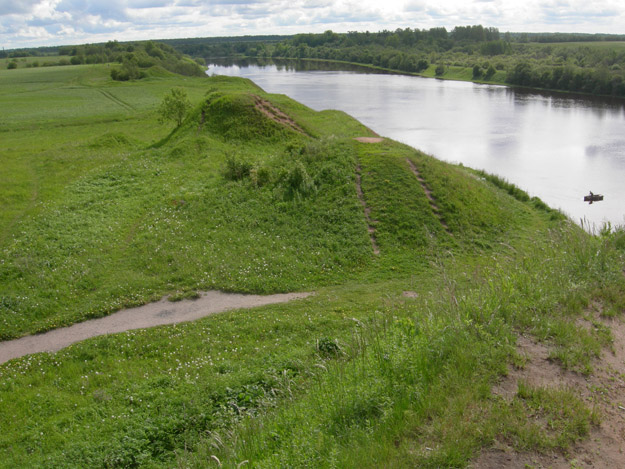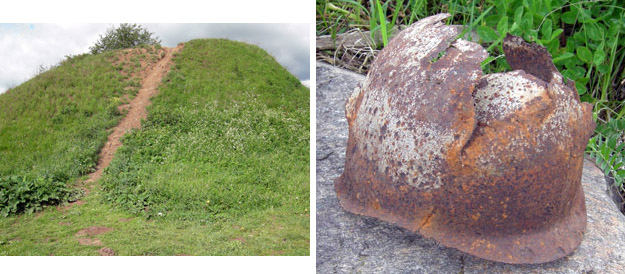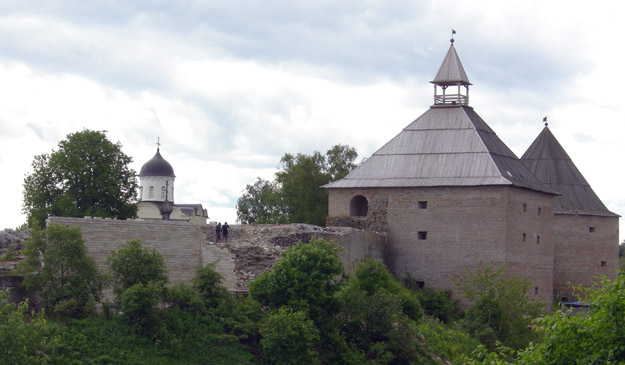STARAYA LADOGA, LENINGRAD REGION, RUSSIA–This place, known as “Old Ladoga” is where the Russian state began. It is an important trade junction situated on the Volkhov River not far from where it enters Lake Ladoga. The Viking roots of this country are dramatically evident in a series of eighth to tenth century burial mounds on both banks of the river.
One of these mounds, the largest, is reputed to be the grave of Oleg, the most vigorous of the earliest rulers. I couldn’t help juxtaposing it with an image of a German World War II helmet we found nearby. The hand of history lies heavy on this fertile land with broad rivers and no other natural defenses.
This site was fortified for centuries. The current manifestation is the Ladoga Fortress from the 17th and 18th centuries.
It protected a river crossing and controlled navigation on the lower Volkhov. Unfortunately virtually all of the original fortress was destroyed in WWII, so what you see above is a reconstruction based on pre-war maps and photographs.






Looks like that German soldier met a gruesome end. Cool viking burial mounds!